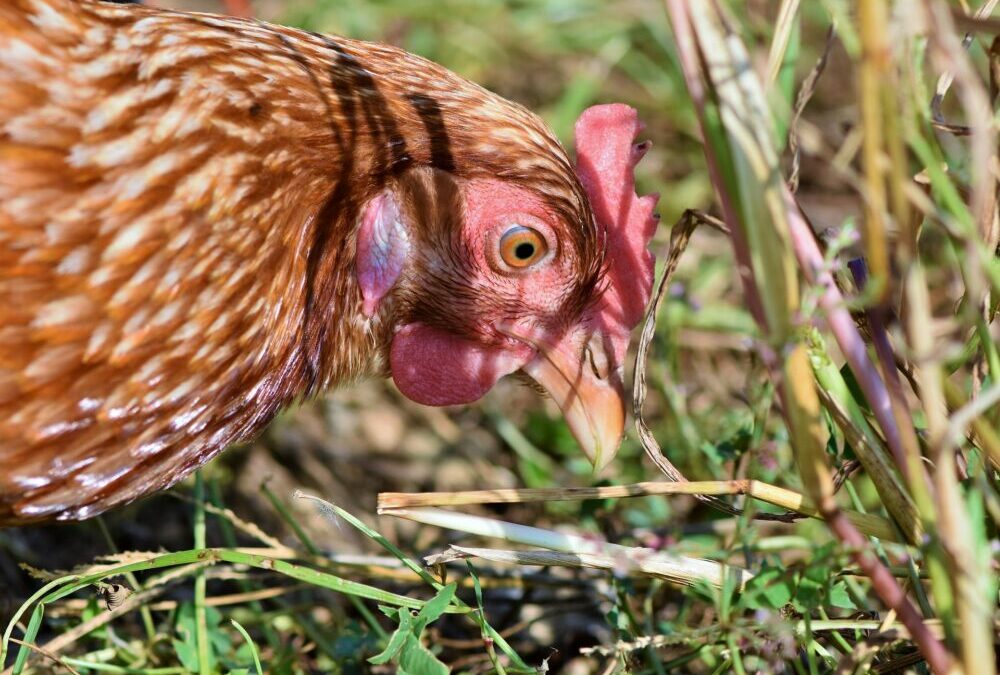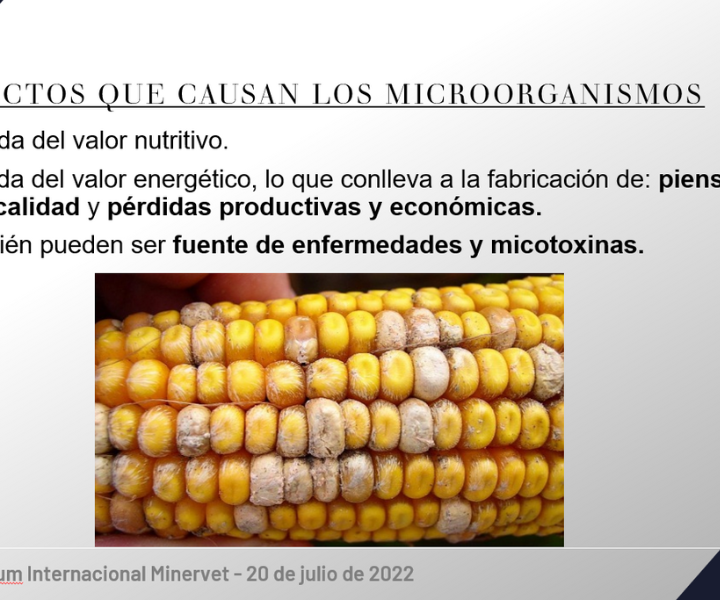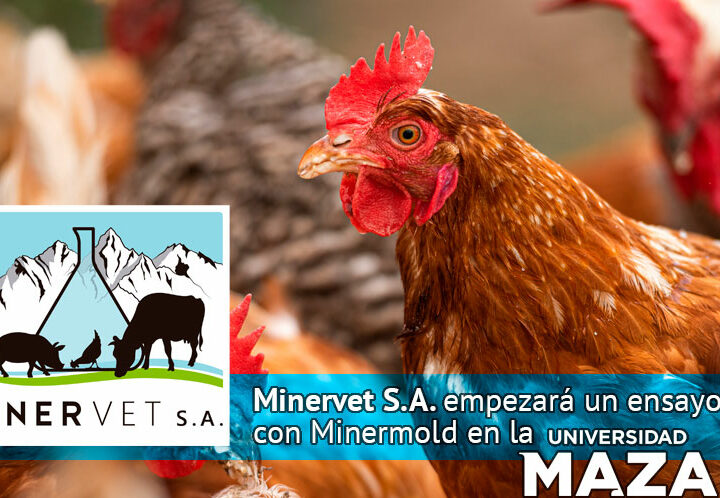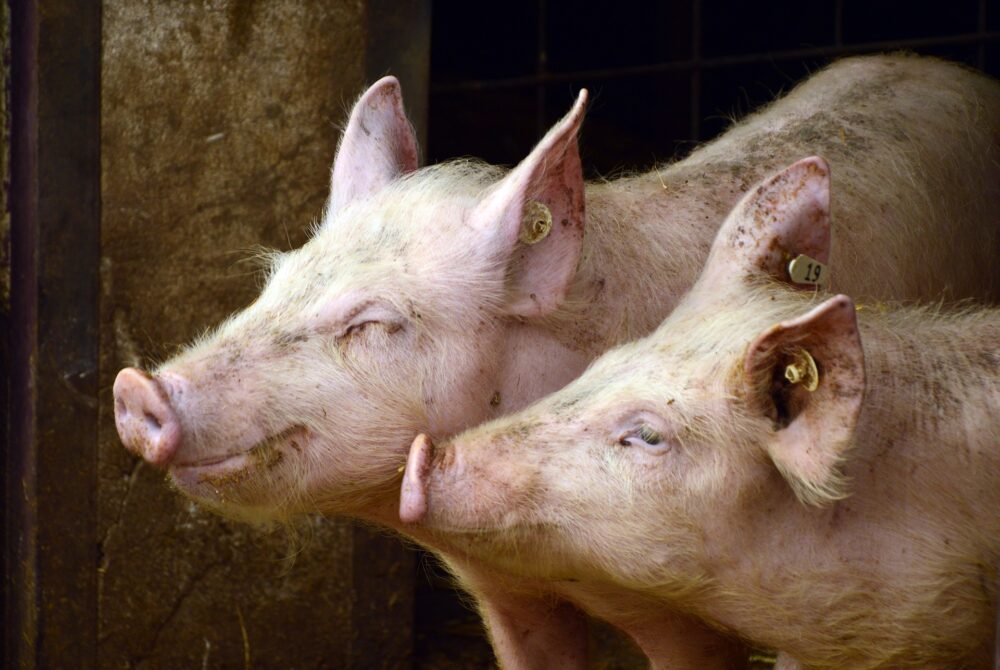
Estado de micotoxinas en materias primas para porcino en iberoamérica
4 de mayo de 2020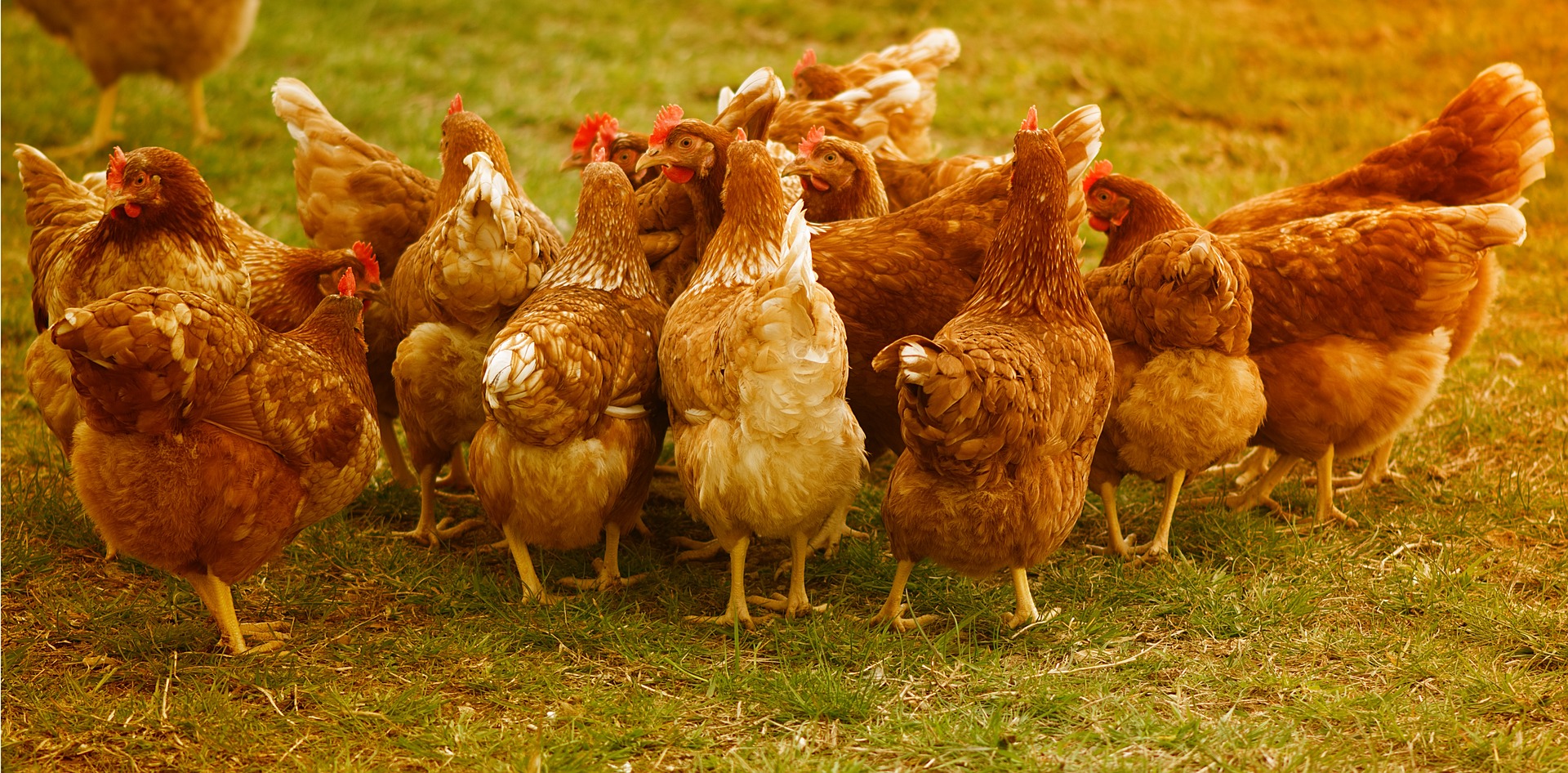
La importancia de las enzimas exógenas en la producción avícola
23 de julio de 2020Los hongos son microorganismos que pueden crecer de forma natural sobre las materias primas destinas para alimentación animal. Existen más de 10.000 especies, aunque sólo un 30% pueden presentar potencial patogénico. Los hongos pueden desarrollarse durante el cultivo o el almacenamiento de materias primas, entre ellas el trigo, maíz, soja y arroz. El almacenamiento de granos fragmentados y en condiciones de humedad, calor y poca aireación promueven la proliferación de mohos y levaduras. Además, muchas especies de levaduras constituyen parte de la microflora habitual del tracto digestivo de los animales. Los hongos que presentan mayor prevalencia en materias primas son Aspergillus, Penicilium, Mucor, Rizopus, Alternaria, Fusarium, Cladosporum y Tricotecenium.
Los alimentos con elevada contaminación por microorganismos denotan un perfil nutricional reducido, palatabilidad alterada y mayor probabilidad de generar consecuencias sanitarias y productivas. El efecto sobre el perfil nutricional es variado: reducción entre un 5 a 25% de la energía metabolizable; reducción del aporte de aminoácidos, disminución del aporte de ciertas vitaminas y menor calidad de proteínas digestibles. Existen modificaciones organolépticas de los granos que puede generar un efecto de rechazo de la ración, especialmente en cerdos.
Micosis digestivas
Las micosis son enfermedades sistémicas causadas por la invasión de hongos sobre los tejidos vivos y generan su destrucción mecánica. El agente causal de la enfermedad es el propio hongo per sé. Estas patologías deben ser diferenciadas de las micotoxicosis, en donde el agente causal de la enfermedad son las “micotoxinas”, metabolitos químicos producidos por hongos filamentosos.
Las micosis producidas por hongos con capacidad de colonizar tejidos del sistema digestivo pueden ser clasificados bajo las siguientes patologías:
- Candidiasis (Moliniasis): Enfermedad conocida como “aftas” en avicultura. Es la micosis digestiva de mayor prevalencia. Esta patología es producida por un variado grupo de levaduras del género Habitualmente se las encuentra como flora habitante de la boca, el buche y el alimento. Suelen colonizar los tejidos ante eventos estresores que perjudican las condiciones fisiológicas e inmunológicas de los animales. La afección del tracto digestivo es más frecuente en aves jóvenes (menores de 3 semanas) que en aves viejas.
Las aves de corral afectadas muestran un crecimiento pobre, depresión, diarrea y deshidratación que pueden provocar la muerte del animal. Las lesiones suelen limitarse al tracto digestivo superior. Candida spp. coloniza los tejidos y forma hiperqueratosis o membranas/ pseudomembranas blanco grisáceas. Estas aparecen como manchas multifocales a confluentes en boca, faringe, esófago y buche. Las úlceras elevadas y redondas en mucosa son características. También en la molleja puede observarse inflamación, exudado catarral o necrótico y mucosa erosionada de fácil desprendimiento.

A: Candida albicans. Tincion Gram. B: Buche con aspecto engrosado y presencia de pseudomembranas blanquecinas y consistencia caseosa. Arne y Lee (2020).
- Micosis de la molleja: Patología generada por hongos filamentosos del género Fusarium, Aspergillus y Los factores que predisponen a esta enfermedad son la contaminación de los alimentos con cargas microbiológicas superiores a 15.000 UFC, presencia de tricotecenos y grasas oxidadas. A la necropsia en aves es posible visualizar procesos erosivos de la capa córnea de la molleja. Su comprobación se realiza mediante la separación de la capa córnea. Es posible visualizar por debajo una capa blanquecina que corresponde al desarrollo de micelios de los hongos filamentosos.

A: Molleja con presencia de lesiones erosiva en capa córnea B: Presencia de manchas blanquecinas en cara interna de la capa córneas de la molleja.
- Mucormicosis: Patología poco frecuente causada por mohos oportunistas del género Rhizopus, Mucor y La presentaciones sistémica y pulmonar suelen acompañarse por afecciones conjuntas con Penicillium y Aspergillus. En casos avanzados pueden generarse afecciones del cerebro, sistema gastrointestinal y piel. Durante la necropsia pueden observarse placas de Peyer congestivas, inflamación de la válvula ileocecal y múltiples nódulos en cavidad abdominal, pulmones y sacos aéreos. En pocos casos, pueden visualizarse úlceras necróticas en cavidad oral.

Imagen: Mucormicosis en válvulas ileocecales.
- Torulopsis: Enfermedad producida por la levadura Candida glabrata. Es una enfermedad de baja incidencia en avicultura y subdiagnosticada. Puede ser confundida con la candidiasis debido a la formación de biopelículas sobre la mucosa. Un hallazgo diferencial durante la necropsia es la presencia de nódulos amarillentos definidos y de tamaño variable en el hígado.
- Megabacteriosis o Macrorhabdosis: Patología poco frecuente que resulta de la infección por Macrorhabdus ornithogaster. El microorganismo es una levadura oportunista que coloniza el itsmo entre el ventrículo y la molleja. Es una enfermedad crónica y progresivamente debilitante. En la necropsia puede observarse inflamación del proventrículo y la molleja. Su diagnóstico se realiza mediante cultivo en laboratorio para ser diferenciada de Candida spp por su morfología similar.
Causas y factores predisponentes
Existen factores de riesgo que predisponen a este tipo de micosis digestivas y agravan los procesos patológicos. Estos incluyen a la mala nutrición, la deficiencia de vitamina D, la falta de higiene en el manejo de instalaciones, el estrés, las enfermedades inmunosupresoras y el uso prolongado de antibióticos que suprimen la microflora normal.
Desde hace medio siglo, los antibióticos a dosis sub-terapéuticas se han utilizado para obtener ventajas económicas y sanitarias en avicultura y el ganado. A corto plazo, se han obtenido mejoras en los parámetros productivos, mayor digestibilidad de nutrientes, protección del sistema digestivo e inmunológico de los animales y prevención ante la colonización de patógenos. Sin embargo, su uso prolongado, indebido y abusivo ha llevado a preocupantes consecuencias a mediano y largo plazo. La principal secuela es la resistencia bacteriana, que consisten en todos aquellos mecanismos implementados por las bacterias con el fin de sobrevivir a la exposición a un agente antimicrobiano. La aplicación preventiva de antibióticos reduce parte de las bacterias patógenas en el intestino, pero no su eliminación total. Esto permite la especialización de los microorganismos en términos de resistencias e implica mayores esfuerzos en estrategias de antibioticoterapia para su eliminación.
Por otro lado, los xenobióticos utilizados generan residuos en subproductos como carnes, huevos y leche. Los alimentos con dosis ínfimas para consumo humano pueden generar procesos de resistencias, que tienen implicancia en salud pública. En base a estos hechos, muchos países han restringido o prohibido el uso de antibióticos sin razones terapéuticas en producción animal.
En tercer lugar, la aplicación de antibióticos reduce parcialmente la microflora bacteriana benéfica que interviene en la digestibilidad de los alimentos y aprovechamiento de nutrientes. El ambiente intestinal es un complejo micro-ecosistema que debe mantener un delicado equilibrio. Esta eliminación genera un desbalance que puede favorecer la colonización de microorganismos patógenos. En ello se fundamenta el desarrollo de las micosis digestivas, en muchos casos oportunistas.
La aplicación de sustancias conservantes a los alimentos ha sido una estrategia utilizada para evitar los efectos del uso de antibióticos. Los ácidos orgánicos son una categoría de productos con ventajas bien conocidas. Sin embargo, paulatinamente han dejado de captar interés, dado que presentan un efecto de corta duración, acción limitada, la eficacia se reduce con el tiempo y presentan propiedades negativas para los operarios y las maquinarias. Algunos pueden alterar características organolépticas de los alimentos y generar el rechazo del consumo de la ración.
Una posible solución alternativa
Una alternativa que ha tomado mayor relevancia en la última década, es el uso de conservantes a base de extractos botánicos naturales. Existen plantas o partes de ellas que concentran microelementos con capacidad microbiocida. Permiten regular e inhibir la proliferación de hongos y bacterias con capacidad patógena, cuando son aplicados a las materias primas antes de su ingestión. El interés en los extractos botánicos ha aumentado, ya que presentan un amplio espectro de acción, efecto prolongado, seguridad en su aplicación, se requiere de dosis reducidas y no generan resistencias bacterianas ni residuos en subproductos. En muchos casos, mejora la palatabilidad de los alimentos haciéndolos preferibles para el consumo.
MINERVET S.A. ha desarrollado un conservante natural denominado MINERMOLD. Este aditivo presenta acción biocida, a diferencia de otros productos convencionales que solo actúan como bacteriostáticos y fungistáticos. Su mecanismo de acción evita la presencia y proliferación de microorganismos en los piensos, la producción de nuevas micotoxinas y la reducción de las propiedades nutricionales de la ración.
Se ha demostrado que MINERMOLD puede ejercer un efecto de larga duración, superando los 5 meses desde su primer y única aplicación. En ensayos in vitro de inhibición de crecimiento con mohos y levaduras (Candidas spp.), ha demostrado ser altamente eficiente y superior al efecto obtenido con ácidos orgánicos. Por otro lado, MINERMOLD ha demostrado que produce mejoras en parámetros productivos de cerdos y broilers, en relación a la ganancia de peso, índice de conversión y tasa de mortalidad. Los resultados se vinculan con una menor carga microbiológica de los alimentos, un ambiente intestinal propicio para el mayor aprovechamiento de los nutrientes y disminución de la incidencia de enfermedades.
Conclusión
La adquisición de materias primas de calidad en alimentación animal, siempre serán un desafío para el productor. El uso de antibióticos y otros aditivos a fin de regular la carga microbiológica de los alimentos ha sido controversial, y en ocasiones, ha promovido la aparición de una variada cantidad de micosis digestivas como enfermedades oportunistas. Los aditivos conservantes formulados a base de extractos botánicos han demostrado ser adecuados, ventajosos y competitivos como estrategia para regular los microorganismos en los alimentos. Su acción se refleja en el mejoramiento de los parámetros de producción y sanitarios de las explotaciones pecuarias, lo que se encuentra directamente vinculado a una mejor valoración económica del sistema productivo.
BIBLIOGRAFIA:
- Arné P, Lee MD. 2020. Fungal Infections. In: Diseases of Poultry. 1st ed. p. 1109–1133.
- Dhama K, Sandip C, Amit V, Richi T. 2013. Fungal/Mycotic diseases of poultry diagnosis, treatment ando control: A review. Pakistan Journal of Biological Science. 16(23):1626–1640. doi:3923/pjbs.2013.1626.1640.
- Ibrahim Z, Ali B, Ali R, Jarad A, Hasan M. 2019. Avian Candidiasis: A Review. International Journal of Pharmaceutical Research. 12(01): 1088- 1091. doi:31838/ijpr/2020.12.01.199
- Seyedmousavi S, Bosco S de MG, de Hoog S, Ebel F, Elad D, Gomes RR, Jacobsen ID, Jensen HE, Martel A, Mignon B, et al. 2018. Fungal infections in animals: a patchwork of different situations. Medical Mycology. 56: 165–187. doi:1093/mmy/myx104.
- Sugiharto S. 2019. A review of filamentous fungi in broiler production. Annals of Agricultural Sciences. 64(1):1–8. doi:1016/j.aoas.2019.05.005.

